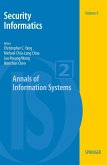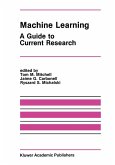Many networked computer systems are far too vulnerable to cyber attacks that can inhibit their functioning, corrupt important data, or expose private information. Not surprisingly, the field of cyber-based systems is a fertile ground where many tasks can be formulated as learning problems and approached in terms of machine learning algorithms.
This book contains original materials by leading researchers in the area and covers applications of different machine learning methods in the reliability, security, performance, and privacy issues of cyber space. It enables readers to discover what types of learning methods are at their disposal, summarizing the state-of-the-practice in this significant area, and giving a classification of existing work.
Those working in the field of cyber-based systems, including industrial managers, researchers, engineers, and graduate and senior undergraduate students will find this an indispensable guide in creating systems resistant to and tolerant of cyber attacks.
Hinweis: Dieser Artikel kann nur an eine deutsche Lieferadresse ausgeliefert werden.
This book contains original materials by leading researchers in the area and covers applications of different machine learning methods in the reliability, security, performance, and privacy issues of cyber space. It enables readers to discover what types of learning methods are at their disposal, summarizing the state-of-the-practice in this significant area, and giving a classification of existing work.
Those working in the field of cyber-based systems, including industrial managers, researchers, engineers, and graduate and senior undergraduate students will find this an indispensable guide in creating systems resistant to and tolerant of cyber attacks.
Hinweis: Dieser Artikel kann nur an eine deutsche Lieferadresse ausgeliefert werden.
From the reviews:
"This is a useful book on machine learning for cyber security applications. It will be helpful to researchers and graduate students who are looking for an introduction to a specific topic in the field. All of the topics covered are well researched. The book consists of 12 chapters, grouped into four parts." (Imad H. Elhajj, ACM Computing Reviews, October, 2009)
"This is a useful book on machine learning for cyber security applications. It will be helpful to researchers and graduate students who are looking for an introduction to a specific topic in the field. All of the topics covered are well researched. The book consists of 12 chapters, grouped into four parts." (Imad H. Elhajj, ACM Computing Reviews, October, 2009)








